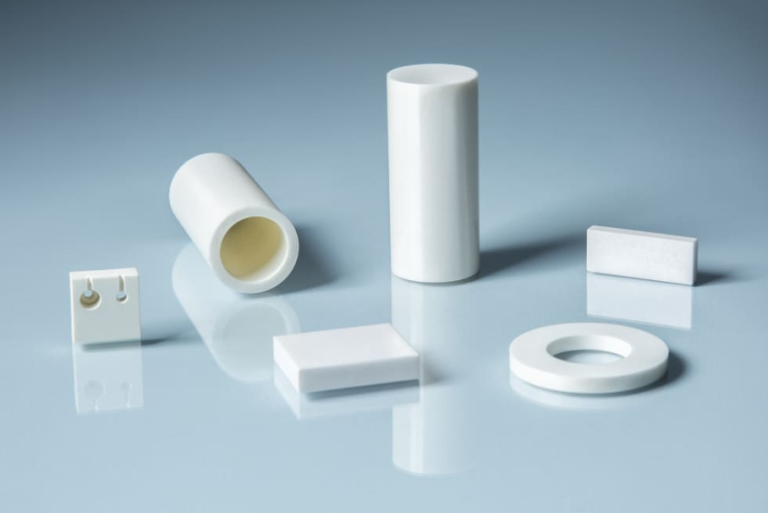Zirconia ceramics have many applications in modern medicine, from dental implants and joint replacements to bone plates and plates with implanted bone fragments. Their advanced material properties provide incredible strength and aesthetics.
Cubic zirconia (CSZ) can be stabilized with the addition of yttrium oxide to create a material less susceptible to low-temperature degradation and more resistant to water than its original version. Furthermore, this material offers high toughness levels and less susceptibility.
Strength
Zirconia ceramics offer superior strength, toughness and reliability which results in exceptional resistance to wear. Their longevity makes them ideal for applications including cutting tools for metal fabrication as well as seals and wear plates for industrial machinery as well as thermal insulators and oxygen measurement tubes.
Sintered zirconia ceramics can be significantly modified by their sintering temperature, with increasing sintering temperature diminishing flexural strength but increasing fracture toughness.
Sintered zirconia’s extraordinary hardness makes its machining challenging, necessitating specialized tools. Polycrystalline diamonds, chemical vapor deposition (CVD) diamonds and cubic boron nitride tools have proven particularly successful; specifically these three tools that work at high speeds to prevent excessive heat generation while minimising flank wear on their tools – leading to cost reduction while upholding precision requirements of cutting operations.
Thermal Stability
Zirconia ceramics can withstand high temperatures, making them suitable for insulation applications. Furthermore, these resilient materials have proven resilient against corrosion at elevated temperatures – ideal for aerospace and automotive uses that demand resistance against extreme conditions.
To ensure optimal thermal stability, it’s crucial that raw zirconia powder is evenly mixed during production. To do so effectively, the sol-gel process offers the best solution as it minimizes particle agglomeration, keeping its crystalline tetragonal zirconia phase unaltered throughout sintering processes.
Additionally, adding stabilizers can significantly enhance zirconia’s thermal properties. Yttrium oxide, magnesium oxide and cerium oxide can all be used to modify its inherent characteristics; typically Y-PSZ provides greater thermal stability while Mg-PSZ excels in wet environments. These modifications create various grades of zirconia ceramic to meet specific application requirements.
Corrosion Resistance
Zirconia boasts impressive mechanical properties with an incredible flexural strength of 100 to 250 GPa and fracture toughness of 10 MPam; however, like all ceramics it may be vulnerable to environmental degradation processes that compromise its performance over time.
Zirconia stands out as an excellent ceramic alternative, showing little degradation at low temperatures and being far less sensitive to moisture levels than its ceramic counterparts. Stabilized yttrium oxide (YO) and calcined silica (CSZ) zirconia variants are particularly suitable for environments experiencing high levels of humidity.
Due to their exceptional strength and toughness, YO and CSZ materials are sought out by demanding structural components that must withstand high stress levels. Their exceptional wear resistance makes YO/CSZ suitable for bushings, sleeves, pistons, rollers, guides, pumps and other mechanical parts exposed to harsh environments. Furthermore, these two materials outshone metals and plastics when it came to corrosion resistance; using chemical inertness they offer exceptional corrosion protection even in demanding applications like laboratory crucibles or furnace/kiln linings that reach temperatures exceeding 1,000 degrees!
Aesthetics
Zirconia ceramics are highly aesthetic and provide numerous aesthetic options that meet patient demands. Unlike metal-fused restorations that can gray unsatisfactorily, zirconia restorations tend not to experience this undesirable side-effect as readily. Furthermore, Next Generation Zirconia offers more natural incisal translucency than previous monolithic zirconia materials, enabling clinicians to balance strength with esthetics more effectively.
Zir-MAX ceramics do not yet achieve full transparency like natural teeth; this leads to some aesthetic concerns remaining.
Visually reminiscent of diamonds and lacking an opaque matrix are among the characteristics that set zirconia apart. To achieve more opaque appearances, various coloration techniques have been devised (such as dipping milled zirconia frameworks into dyed liquid) in order to add depth.
Aesthetic Zirconia is a premium dental material that combines the strength and durability of traditional resins and metals with porcelain’s aesthetic properties to produce excellent restorations and impressive cosmetic outcomes. Dentists utilize it in order to produce superior dental restorations with dramatic cosmetic outcomes.

